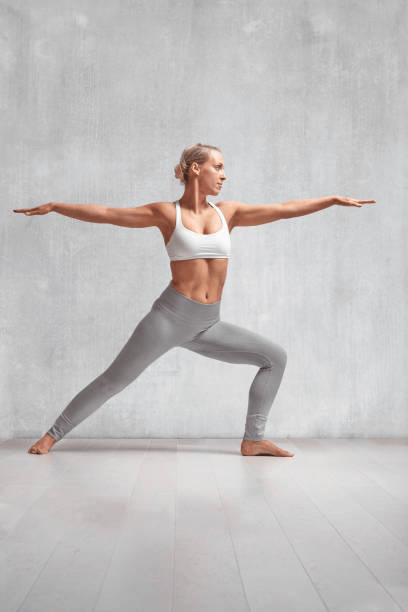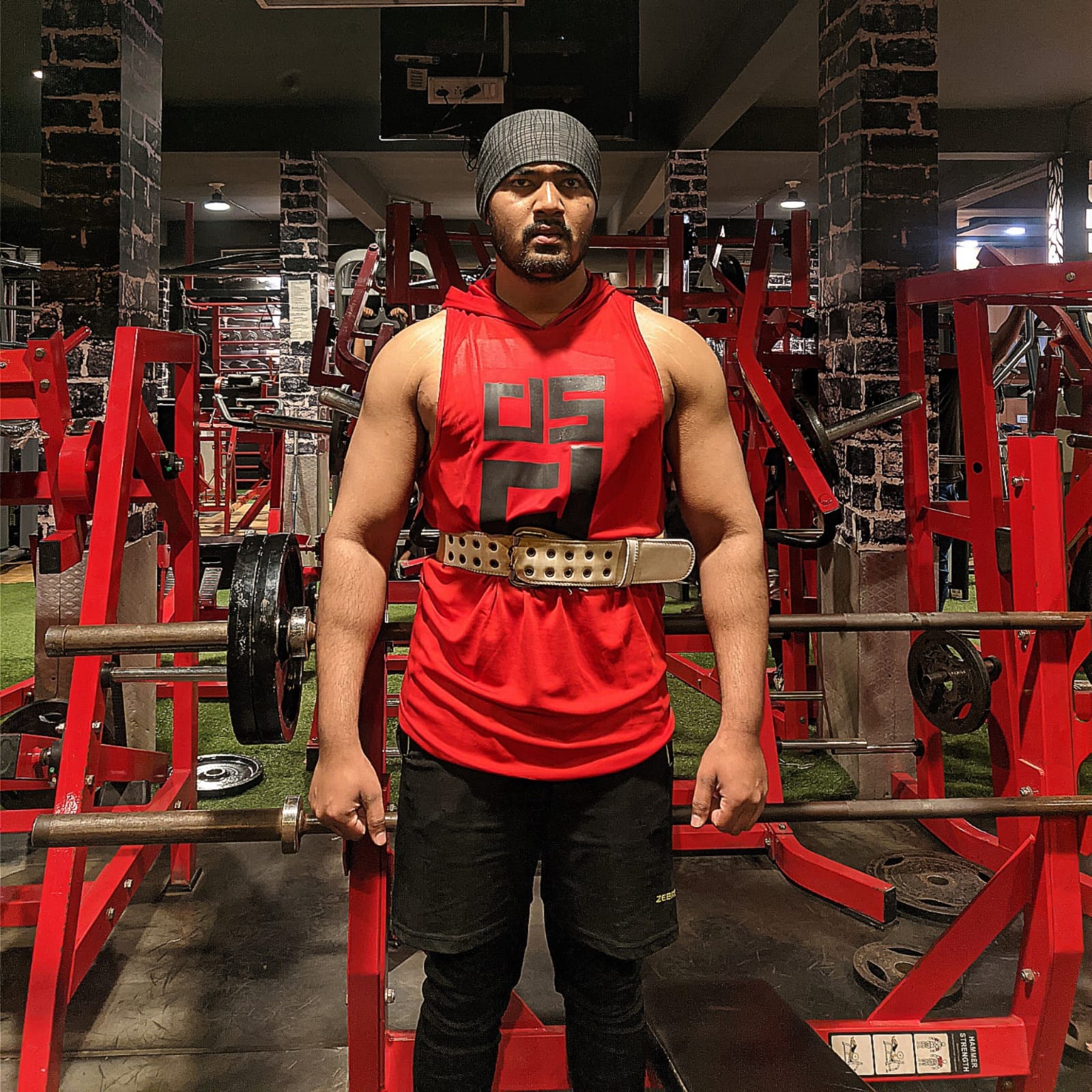Yoga is a practice that offers immense physical, mental, and spiritual benefits—but only when performed correctly. As a personal trainer, I see so many individuals who are motivated by the benefits of yoga. And I often get asked by my clients – Am I doing yoga poses correctly?”
This is a crucial question because improper form can not only reduce the effectiveness of your practice but also lead to discomfort or even injury.
In this guide, I’ll provide clear and actionable solutions to help you assess and improve your yoga practice.

Table of Contents
ToggleHow To Know If You’re Doing Yoga Correctly?
Self-assessment is a valuable skill from which you can improve your yoga pose practice. These methods can help you gauge your performance:
Mirror Check: Practicing in front of a mirror allows you to observe your alignment. For instance, while performing Warrior II (Virabhadrasana II), you can check if your front knee is stacked over your ankle and your back foot is firmly grounded.
Video Recording: Record your sessions and compare them to trusted yoga tutorials. This approach is particularly useful for identifying subtle misalignments in poses like Plank or Downward Dog.
Body Awareness: Focus on how your body feels during each pose. Discomfort or imbalance often signals that adjustments are needed. For example, if your wrists hurt during Downward Dog, check your hand placement and weight distribution.

Why breathing is so important in Yoga?
Proper breathing is at the heart of yoga practice. Observing your breath can reveal whether you’re performing poses correctly:
Sync Movement with Breath: Ensure your movements align with your breath. For example, inhale when reaching upward in Mountain Pose (Tadasana) and exhale when folding forward.
Steady Breathing: Erratic or shallow breaths often indicate strain. In contrast, steady and deep breathing reflects comfort and proper alignment.
No Breath-Holding: Holding your breath is a sign of overexertion. If this happens, ease into the pose or modify it for your current ability.

Common Mistakes to Avoid when doing Yoga
Even experienced practitioners can fall into these common pitfalls. Avoiding them will enhance your practice:
Skipping Warm-Ups: Jumping straight into advanced poses can lead to injury. Incorporate gentle stretches like Cat-Cow (Marjaryasana-Bitilasana) to prepare your body.
Overstretching: Avoid pushing beyond your limits. For example, in Seated Forward Bend (Paschimottanasana), prioritize a straight spine over reaching for your toes.
Incorrect Alignment: Small errors can lead to strain. In Tree Pose (Vrikshasana), ensure your standing foot is firm, and avoid pressing your lifted foot against your knee joint.
Signs that you are getting better at Yoga
So, now that you have learned about the mistakes to avoid and, importance of breathing. I assume that from here you might have improve you ability of doing Yoga poses.
Yet, Progress in yoga is not just about mastering advanced poses. Here are key indicators of improvement:
Enhanced Flexibility: Gradual increases in your range of motion, such as deeper stretches in Child’s Pose (Balasana), signify growth.
Improved Stability: You’ll notice greater control in balancing poses like Warrior III (Virabhadrasana III).
Mind-Body Connection: Feeling more present and mindful during practice reflects significant progress.
Post-Practice Energy: Instead of fatigue, you feel refreshed and revitalized after sessions.

When Should I Hire a Yoga Instructor
While self-assessment techniques and online resources are invaluable, there are certain situations where seeking professional guidance is crucial for ensuring safe and effective yoga practice. Here’s when you should consider reaching out to an experienced yoga instructor or therapist:
Persistent Discomfort or Pain: If you consistently experience discomfort or pain during specific poses, it’s essential to consult a professional. They can identify whether improper alignment, lack of flexibility, or another issue is causing the problem and provide tailored adjustments.
Difficulty Understanding Poses: If you struggle to grasp the correct technique for certain poses despite following tutorials or guides, a professional can offer hands-on adjustments and personalized demonstrations to clarify your practice.
Need for Personalized Modifications: For individuals with injuries, chronic pain, or conditions like arthritis or scoliosis, standard yoga instructions may not be sufficient. A professional can recommend modifications or specific yoga styles, such as restorative or therapeutic yoga, to suit your needs.
Desire to Progress Safely: When aiming to advance to more challenging poses, such as inversions (Headstands or Handstands), a trained instructor can guide you through preparatory exercises and spotting techniques to minimize the risk of injury.
Lack of Confidence in Self-Assessment: If you’re unsure about your alignment or body mechanics and worry about reinforcing bad habits, a few sessions with a professional can provide valuable feedback and enhance your confidence.
Seeking Specialized Knowledge: Whether you’re exploring advanced breathing techniques (Pranayama), meditation, or specific yoga styles like Ashtanga or Iyengar, an expert can offer deeper insights and guidance.

How to choose a good Yoga Instructor?
- Qualifications Matter: Look for instructors certified by reputable organizations, such as Yoga Alliance or International Yoga Federation.
- Experience and Specialization: Choose someone with experience in your preferred style or with expertise in addressing specific needs, such as injury recovery or prenatal yoga.
- Approachability: A good instructor fosters a supportive and non-judgmental environment, encouraging questions and feedback.
Your Final Learnings
It’s really important to know if you’re doing yoga right – that way, you get all the good stuff out of it and avoid getting hurt. You can check in with yourself by paying attention to your body, your breath, and making sure you’re not making common mistakes as described in this blog post.
It’s also great to notice when you’re making progress. Doing all of this will help you have a safe and enjoyable yoga practice. Just remember, yoga isn’t about being perfect right away; it’s more about showing up regularly and being present in the moment.
As a personal trainer, I always tell people to be patient and curious when they start yoga. If you’re ever unsure about a pose, it’s always a good idea to ask a professional for help or check out some good resources. Yoga can really change you, both physically and mentally. So, embrace the journey and enjoy how far you come!

Leave a Reply